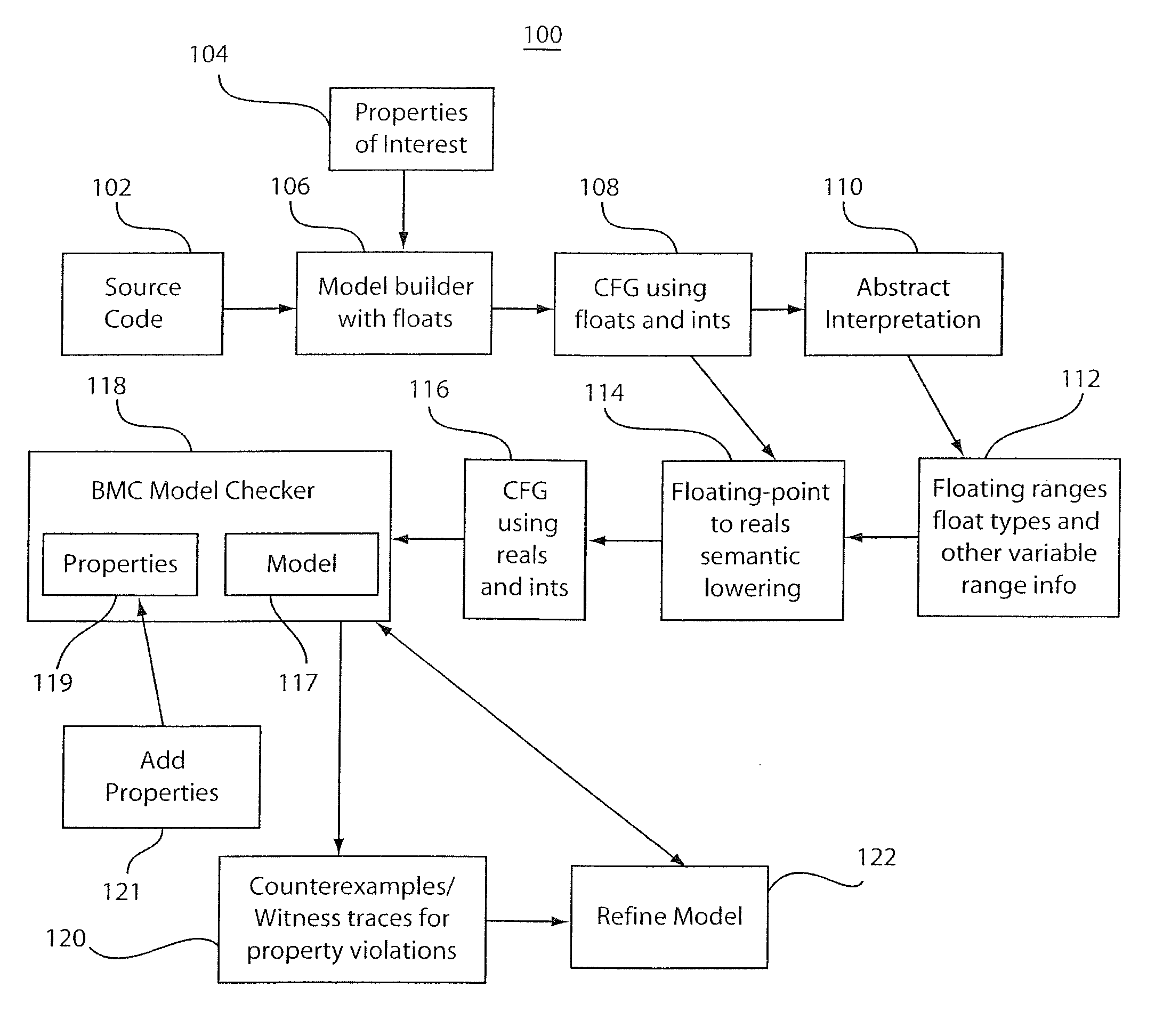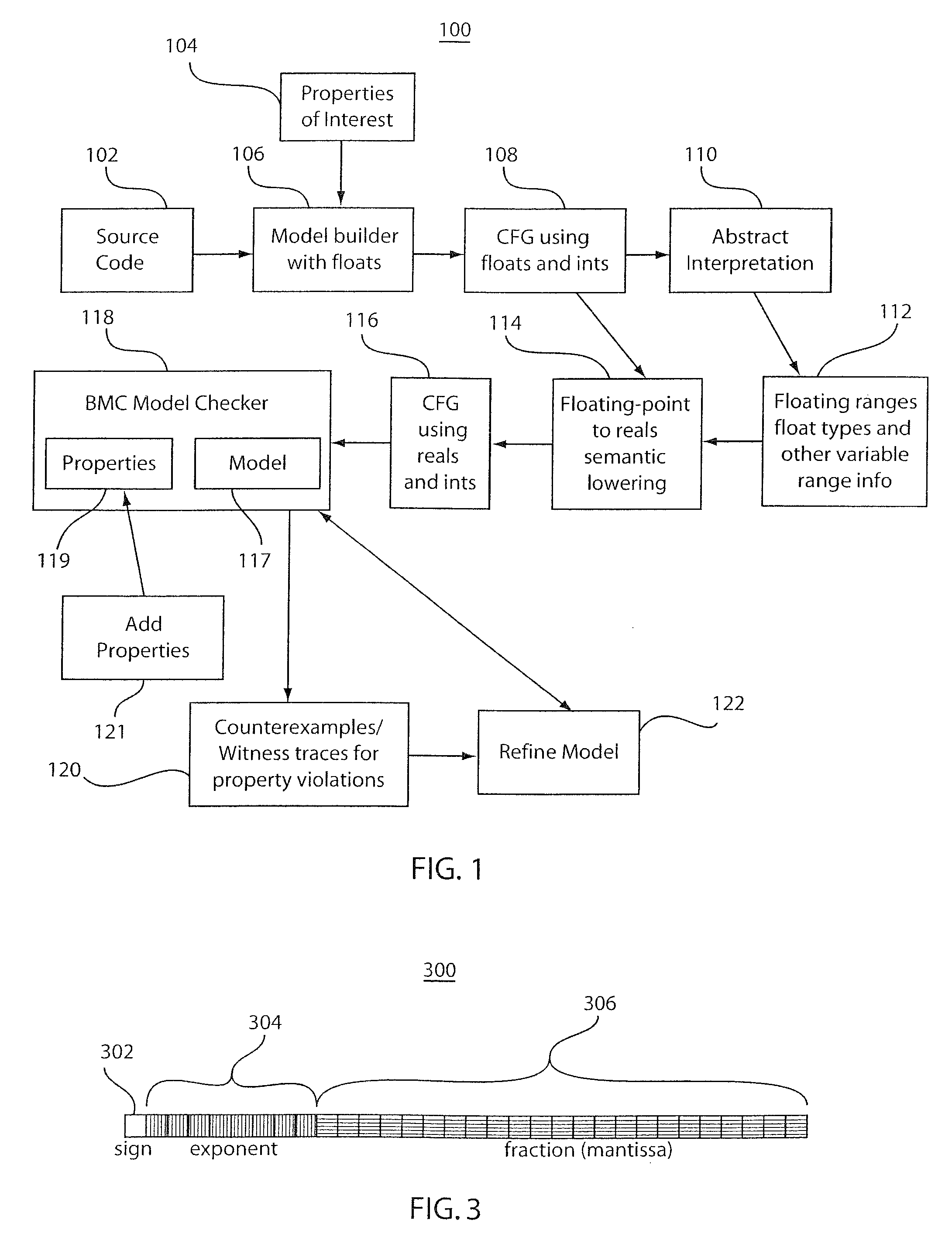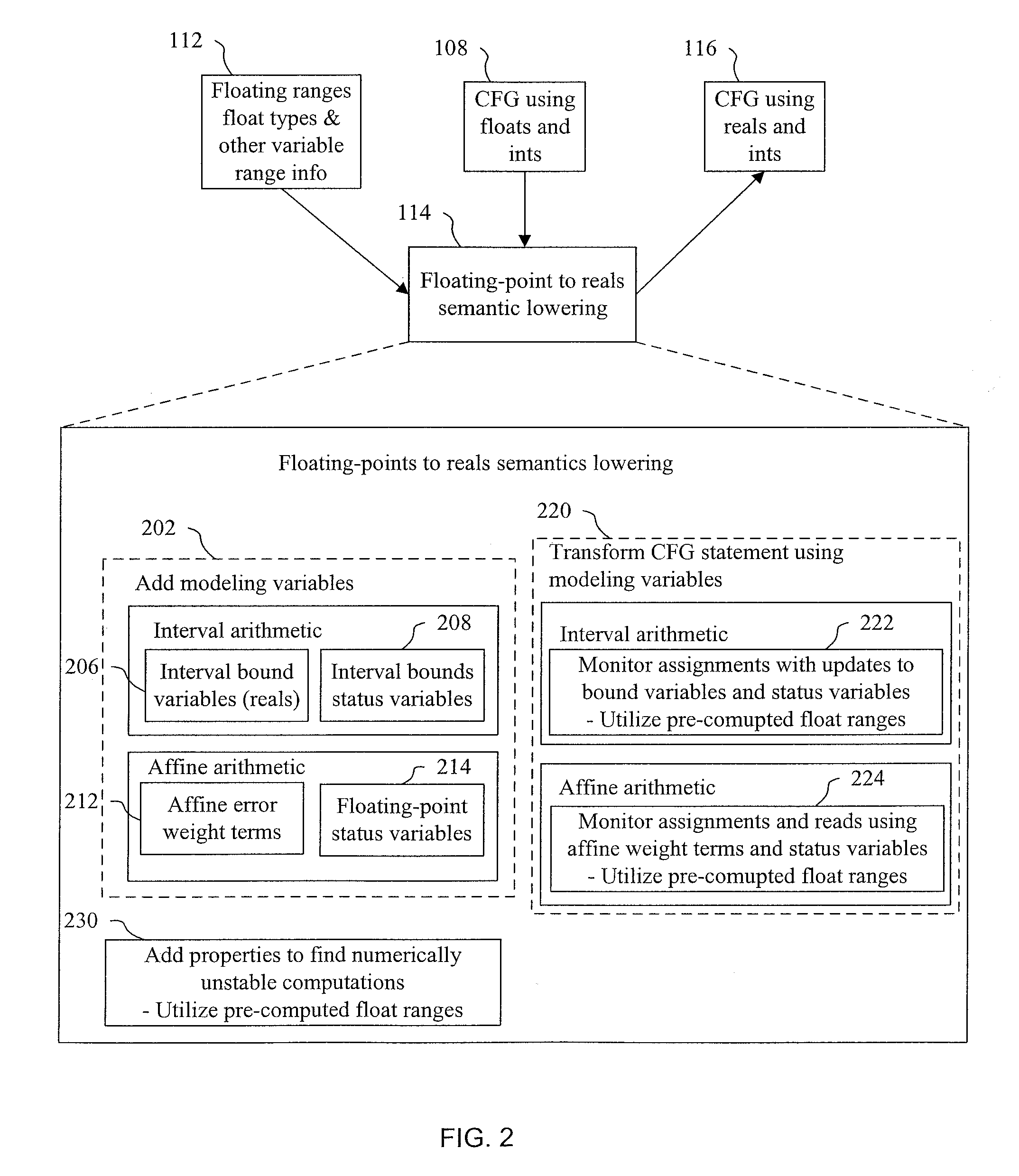Systems and methods for model checking the precision of programs employing floating-point operations
a technology of model checking and program precision, applied in error detection/correction, instruments, computing, etc., can solve problems such as limiting precision in certain cases, memory correctness issues, and scalable analysis techniques based on abstract interpretation
- Summary
- Abstract
- Description
- Claims
- Application Information
AI Technical Summary
Benefits of technology
Problems solved by technology
Method used
Image
Examples
Embodiment Construction
[0017]According to exemplary aspects of the present invention, method and system implementations can be employed to detect program paths that lose significant precision in floating-point computations of a program. To this end, a mixed real-integer model for floating-point variables and operations involving floating-points in a program can be introduced. Floating-point variables in the source code may be associated with auxiliary or modeling variables in the model to track the variability in their values along computations. These modeling variables can include variables in the reals, as well as variables of a small enumerated type denoting whether the floating-point variable is NaN (not a number), some infinity denoted as Inf, or an actual number. For example, the modeling variables that are of type real can represent a bounding interval in the model for its associated floating-point variable, as long as the type of the variable is numeric in that it is not NaN or some Inf. This boun...
PUM
 Login to View More
Login to View More Abstract
Description
Claims
Application Information
 Login to View More
Login to View More - R&D
- Intellectual Property
- Life Sciences
- Materials
- Tech Scout
- Unparalleled Data Quality
- Higher Quality Content
- 60% Fewer Hallucinations
Browse by: Latest US Patents, China's latest patents, Technical Efficacy Thesaurus, Application Domain, Technology Topic, Popular Technical Reports.
© 2025 PatSnap. All rights reserved.Legal|Privacy policy|Modern Slavery Act Transparency Statement|Sitemap|About US| Contact US: help@patsnap.com



